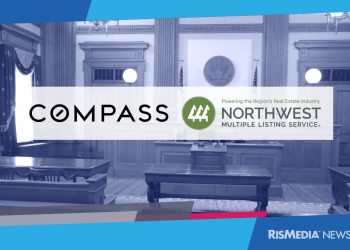At a seasonally adjusted annual rate of $586.3 billion, new construction starts in July fell 2 percent from the previous month, according to Dodge Data & Analytics. A steep drop by electric utilities pulled down the non-building construction sector, which in turn contributed to the slight decline for total construction starts. On the plus side, moderate improvement was reported for nonresidential building, helped by greater activity for its commercial building and manufacturing plant segments, while residential building benefitted from a stronger pace by multifamily housing. During the first seven months of 2016, total construction starts on an unadjusted basis were $372.2 billion, down 11 percent from the same period a year ago.
The January-July period of 2015 had featured 13 very large projects valued at $1.0 billion or more, including a $9.0 billion liquefied natural gas export terminal in Texas, an $8.5 billion petrochemical plant in Louisiana, and two massive office towers in New York, N.Y. with a combined construction start cost of $3.7 billion. In contrast, the January-July period of 2016 included only four projects valued at $1.0 billion or more. Excluding these exceptionally large projects from the comparison leads to a smaller 4 percent decline for total construction starts year-to-date.
The July data lowered the Dodge Index to 124 (2000=100), down from 126 in June. After the improved pace reported during the first three months of 2016, the construction start statistics showed an up-and-down pattern during the April-June period, and June’s 7 percent slide has now been followed by the 2 percent drop in July.
“While the loss of momentum for total construction starts in June and July may raise some concern about the overall health of the construction industry, it’s useful to keep in mind that the recent declines were tied to two segments, public works and electric utilities, that are prone to volatility on a month-to-month basis,” states Robert A. Murray, chief economist for Dodge Data & Analytics. “June’s retreat for total construction reflected a pullback by public works after a strong performance in May, and July’s retreat for total construction reflected a subdued amount of electric utility starts for that month. At the same time, nonresidential building was able to register moderate growth in June and July, while residential building can be viewed as essentially stable when taking the average of June and July.”
Murray continues, “The year-to-date comparisons so far in 2016 have been skewed by the number of exceptionally large projects that reached the construction start stage during the first half of 2015. There were fewer such projects during the second half of 2015, which should help the year-to-date comparisons as 2016 proceeds. It’s true that the July statistics showed only slight improvement with the year-to-date comparisons, but that improvement should become greater with the August and September construction start reports. This is due to the fact that last year August and September witnessed a broader slowdown for construction starts, as investment grew more cautious given concerns about the global economy and the continued drop in energy prices. This year the uncertainty related to energy prices has diminished, with the price of oil hovering in the range of $40 to $50 per barrel. Admittedly though, this year has a new element of uncertainty with regard to the upcoming November elections, which conceivably could dampen some investment in the very near term.”
Non-building construction in July plunged 17 percent to $121.7 billion (annual rate). The electric utility and gas plant category fell 56 percent in July, while public works as a group was unchanged from the previous month. July’s steep drop for electric utilities and gas plants reflected the comparison to June’s elevated amount, which included three huge natural gas-fired power plants located in Tennessee ($975 million), New York ($900 million), and New Jersey ($600 million). In contrast, the power plant projects that were entered as July starts were generally smaller in scale than what was reported in June, as July’s largest power plant projects were a $385 million solar power facility in California and three wind farms located in California ($300 million), North Dakota ($250 million), and Minnesota ($135 million). The public works group in July showed a mixed performance by category.
On the plus side, sewer construction jumped 86 percent, supported by the start of the $415 million EchoWater biological nutrient removal project in California. Water supply construction advanced 48 percent, lifted by the start of four water main projects totaling $376 million in Chicago Ill. On the negative side, decreased activity was reported in July for highways and bridges, down 8 percent; river/harbor development, down 8 percent; and miscellaneous public works (site work, rail projects, pipelines, etc.), down 29 percent.
Non-residential building, at $187.9 billion (annual rate), grew 4 percent in July following its 7 percent gain in June. The commercial building group advanced 3 percent, with much of the lift coming from a 20 percent jump for office construction. Large office building projects that reached groundbreaking in July were the following – a $400 million data center in Grand Rapids MI, a $133 million office building in Dallas Texas, and the $100 million Comcast office building at Sun Trust Park in Atlanta Ga.
During the first seven months of 2016, the top five metropolitan areas ranked by the dollar amount of office construction starts were: New York N.Y., Washington D.C., Dallas-Ft. Worth Texas, Atlanta Ga., and San Francisco Calif. Store construction in July improved 3 percent, helped by the start of the $50 million Simon Premium Outlet Mall in Norfolk VA. New warehouse starts in July slipped 6 percent and a 14 percent drop was reported for hotels, although July did include the start of the $100 million Maryland Live Casino Hotel in Hanover Md. and the $100 million renovation of the Phoenician Resort in Scottsdale Ariz. The manufacturing building category increased 89 percent in July after a weak June, lifted by the start of a $350 million pharmaceutical research facility in East Windsor N.J. and a $154 million plant for an automotive systems supplier in Cottondale Ala.
The institutional side of the nonresidential building market eased back 1 percent in July. Reduced activity was reported for educational facilities, down 5 percent, although July did include the start of a $150 million computer science building at the University of Maryland in College Park Md, a $130 million high school in Pinole Calif., and a $129 million high school in Secaucus N.J. Healthcare facilities also showed reduced activity in July, slipping 4 percent, despite the start of a $250 million critical care facility in Tallahassee Fla. and the $239 million Bayhealth medical campus in Milford Del. The smaller institutional categories witnessed gains in July, with public buildings up 5 percent, churches up 8 percent, amusement and recreational facilities up 11 percent, and transportation terminals up 11 percent. The transportation terminal category was boosted by the $295 million Terminal 1 Concourse A and connector bridge addition at Ft. Lauderdale-Hollywood International Airport in Ft. Lauderdale Fla.
Residential building in July increased 3 percent to $276.7 billion (annual rate), rebounding after the 3 percent decline reported in June. Multifamily housing provided the upward push, rising 9 percent. July included eight multifamily projects valued at $100 million or more, led by the $485 million Brickell Flatiron high-rise in Miami Fla, a $275 million apartment high-rise in Chicago Ill, and a $250 million luxury condominium high-rise in New York N.Y.
During the first seven months of 2016, the top five metropolitan areas ranked by the dollar amount of new multifamily starts were – New York N.Y., Miami Fla., Chicago Ill., Los Angeles Calif. and Boston Mass. The New York NY share of the national dollar amount of multifamily starts was 22 percent so far in 2016, down slightly from the 26 percent share for the full year 2015. Single family housing in July increased 1 percent, basically extending the plateau present during the first half of 2016. The regional pattern for single family housing in July showed increases in three regions – the Northeast, up 8 percent; the West, up 6 percent; and the South Atlantic, up 2 percent; while declines were reported in the Midwest, down 2 percent; and the South Central, down 5 percent.
The 11 percent decline for total construction starts on an unadjusted basis during the January-July period of 2016 was due to diminished activity for both nonbuilding construction and nonresidential building from their heightened levels of a year ago. Nonbuilding construction dropped 21 percent year-to-date, with public works down 14 percent and electric utilities/gas plants down 33 percent. Nonresidential building dropped 18 percent year-to-date, with commercial building down 7 percent, institutional building down 12 percent, and manufacturing building down 66 percent. Residential building was the one major sector to show a year-to-date increase, rising 2 percent with single family housing up 7 percent while multifamily housing retreated 9 percent. By geography, total construction starts during the first seven months of 2016 revealed this pattern relative to a year ago – the South Central, down 31 percent; the Northeast, down 16 percent; the West, down 2 percent; the South Atlantic, down 1 percent; and the Midwest, up 3 percent.
Source: http://www.construction.com










